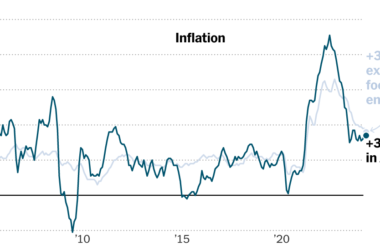Key Points
One of the greatest honors is ringing the bell at the Nasdaq or New York Stock Exchange.
Both markets officially mark their opens at 9:30 a.m. Eastern Standard Time and close at 4 p.m. EST with bell-ringing ceremonies broadcast live worldwide.
Ringing the bell at the Nasdaq is a promotional activity.
One of the greatest honors in finance is ringing the bell at the Nasdaq or New York Stock Exchange. Both markets officially mark their opens at 9:30 a.m. Eastern Standard Time (EST) and close at 4 p.m. EST with bell-ringing ceremonies broadcast live worldwide.
Are there any benefits to being the one to ring the bell and open or close the Nasdaq or New York Stock Exchange? One study suggests there may be a small quantifiable benefit to a company’s stock price, but there’s much more to the story.→ All the trading advice you’ve ever received boils down to this (From DTI Trader) (Ad)
Companies wanting to see a significant benefit from participating in a bell-ringing ceremony will likely need to include it in a broader public relations and investor relations strategy.
“The best opening or closing bells are wrapped in with an investor day or major media announcement that are amplified by the all-investor-eyes-on-you bell-ringing spectacle,” explained Jeff Lambert, CEO of retail investor and shareholder loyalty platform TiiCKER and a 25-year investor relations veteran. “It’s an awareness play, but when you’re competing for investors — particularly retail investors — the bell ringing is a giant ad and endorsement for the company that, in our experience, has a long-term positive effect on the stock and the overall brand of the organization.”
What is the bell-ringing ceremony?
The iconic bell-ringing ceremony dates back to the 1870s when continuous trading began. The bell-ringing ceremony marks the official beginning and end of regular trading hours and is considered a great honor.
For the Nasdaq exchange, the bell-ringing ceremony is just that — ceremonial. The Nasdaq has never had a physical bell, and as trading on the stock exchange has always been electronic, there has never been a physical trading floor from which to bring a bell.
However, the spirit of the bell-ringing ceremony is the same on the Nasdaq as on other stock exchanges worldwide, even as stock exchanges have gradually switched from ringing an actual bell or gong to pressing a button to “ring” a digital bell. Ringing the bell at the Nasdaq is essentially a promotional activity. The bell ringers tend to be executives at publicly traded companies that are announcing or celebrating various events, such as:
Initial public offerings or major IPO anniversaries
Significant company milestones
New product launches
Anniversaries of their founding
Other major announcements or company events
From an investor relations perspective, Christopher Tyson, executive vice president of MZ North America, believes the bell-ringing ceremony humanizes a publicly traded company while bringing its story to the investment community.
Other than corporate executives, other guest bell ringers may represent non-profit organizations or other entities marking a significant event. For example, a non-profit board may ring the bell to raise awareness around a specific issue or problem they address in their charity work or to commemorate a particular holiday or commemorative day. Sometimes, celebrities or dignitaries may also ring the bell.
The benefits of ringing the bell at the Nasdaq
For publicly traded companies, there may be several benefits to participating in bell-ringing ceremonies. As noted, they provide ample opportunities for companies to celebrate their achievements and promote themselves, especially to investors.
Loren Mortman, president and CEO of The Equity Group, an investor relations consulting firm founded in 1974, noted that a Nasdaq bell-ringing ceremony is an excellent way for executives to showcase their company to institutions and millions of retail investors.
“We make sure to harness the energy of this event by inviting major investors to the Nasdaq MarketSite (when room permits), arranging investor meetings surrounding the event, and generating media interviews by collaborating with Nasdaq’s in-house team and leveraging our own contacts,” she said. “We also share the event through various channels, including social media.”
These ceremonies offer many more promotional opportunities today since they are broadcast live online and on finance-oriented networks like CNBC, Bloomberg TV and Fox Business News. The rise of social media has also boosted the visibility of companies that ring the bell, and Nasdaq offers some other benefits as well, including:
One hour of exclusive advertising on the Nasdaq tower and marquee, the largest video display board in Times Square
Companies can display a 30-second ad with no audio, alternating with a welcome message from Nasdaq and photos captured live inside the studio.
Photographs captured by a professional photographer during the ceremony
Social media posts and photos pushed out on the Nasdaq feeds followed by investors and media worldwide
Companies can spin photos and other content generated from the bell-ringing ceremony into additional promotional opportunities.
“Companies that are invited to open the market should maximize the media opportunity,” said Ian Tennant, director at Newsfile, a financial newswire with over 2,000 clients trading on public markets. “The professional photos captured at the market open provide valuable media assets that can be included in a press release and delivered to a worldwide audience.”
Aside from those benefits, the most important question company management wants to know is whether ringing the bell will help increase their stock price. While there isn’t a lot of data addressing this question, at least one study was done, albeit more than a decade ago.
Quantifying the benefits of ringing the bell
A study published in 2009 looked at the potential impact participating in a bell-ringing ceremony may have on a company’s stock price. The researchers used standard event study methods focused on daily abnormal returns to detect any potential gains in company stock prices, targeting a period ending 10 days before the event date and lasting 50 days.
However, they also found that the response was relatively short-lived, with the cumulative abnormal return a day later being insignificant. The researchers noted that this result is consistent with behavioral bias and suggests a favorable initial response to a media event that is later mitigated or reversed as a “more rational analysis offsets the initial emotional response.”
They also found that the most significant impact occurred on the trading day before the event, probably stemming from the announcement of who would ring the bell the following day.
“Although we sometimes notice an uptick in the stock following a bell-ringing, it’s less of a direct correlation and more likely attributable to the beneficence of the ‘Nasdaq gods’ on that day,” Mortman added. “Any efforts made leading up to and surrounding a bell-ringing should absolutely continue in the following months and quarters, as it is an ongoing process for companies, especially small- and mid-cap companies, to build not only awareness of their company, but understanding of their business model, strategy, and future prospects.”
How PR and IR can leverage a company’s bell-ringing ceremony
Although the study referenced above indicates that ringing the bell may offer very little quantifiable benefit to a company’s stock price, the sheer amount of competition for the honor suggests there is much more to consider. In fact, 2021 saw some significant battles over the honor of ringing the bell at the Nasdaq and the New York Stock Exchange due to the sheer number of IPOs.
Thus, the benefits of ringing the bell are clearly more subjective in nature as the experience is about getting the company’s name out. Essentially, it’s a public relations play, and as any seasoned PR expert will explain, sharing a company’s story is a continual process involving what’s virtually a living, breathing organism.
The bell-ringing ceremony also gives credit where it’s due to workers who otherwise don’t spend much time in the spotlight.
“One thing that we impress upon our clients is to think of the bell-ringing as a way to recognize the team for their hard work and commitment,” explained Mortman. “For many of these folks who spend their days outside of the spotlight, it’s a once-in-a-lifetime opportunity that the C-suite should embrace as a meaningful way to say, ‘thank you.’”
Thus, ringing the bell at the Nasdaq should be part of a wider PR strategy that involves plenty of follow-up on the back end to ensure that the company’s name doesn’t disappear entirely from the public conversation two days later. Investor relations professionals can also leverage a company’s bell-ringing ceremony to continue the investing conversation around its stock by explaining to investors why it’s worth considering for their portfolio.
Management teams should also think about how raising awareness about their companies by participating in a bell-ringing ceremony can also draw the attention of consumers in addition to investors. Neil Shah, executive director of content and strategy at Edison Group, which works with over 60,000 listed companies globally, believes the path to purchase starts with awareness.
“Any activity that raises the profile of the business in the media does typically see short-term impact on volumes and share price,” he added. “This kind of activity, however, needs to be part of an ongoing program of profile raising. Put it another way, we don’t see Walmart advertising quarterly.”
With the right PR and IR follow-up, companies can benefit significantly from participating in a bell-ringing ceremony. All it requires is a PR and IR team that can leverage such a singular event…








